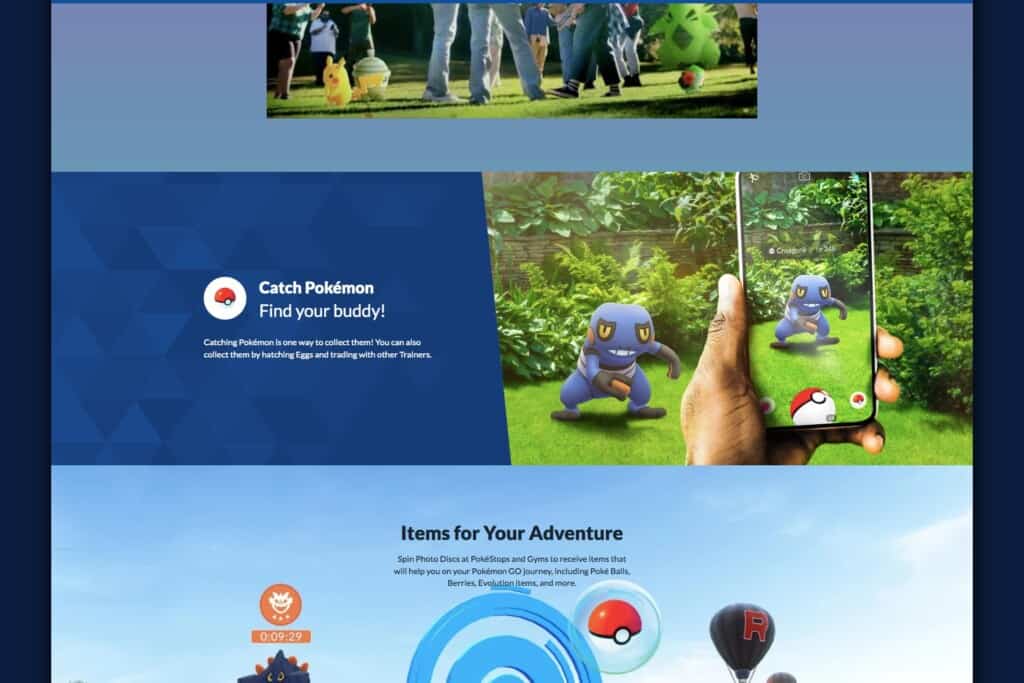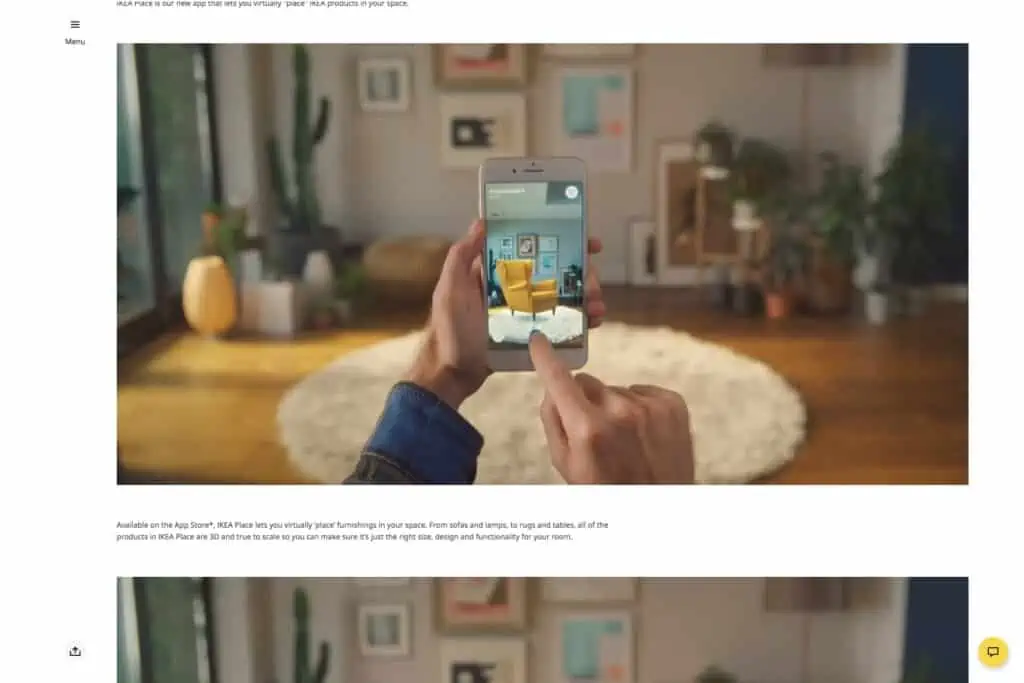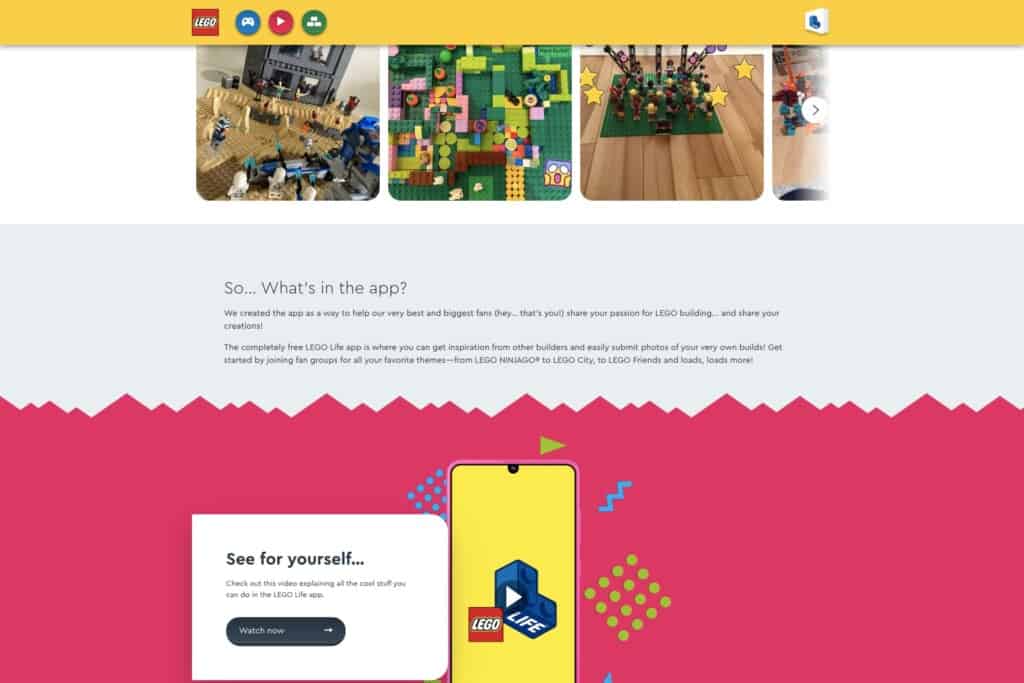The rise of eCommerce has led to dramatic shifts in the way we shop
Give your customers a unique, immersive retail experience by integrating virtual or augmented reality into your website.
Consumers can browse and shop for products from the comfort of their own homes or while they’re out and about, but it is challenging to convey a product’s physical attributes online.
For retailers that pride themselves on offering unique in-store experiences, there has never been a way to replicate that experience in the digital world — until very recently.
Virtual reality (VR) and augmented reality (AR) technology offer consumers a closer retail experience without having to set foot in-store. The global VR and AR retail market is growing rapidly, and is expected to be worth over $2 billion by 2027.
That’s a growth rate of nearly 70% in the forecast period of 2020 to 2027.
It’s easy to see why this technology has become so popular. Barriers for shopping are being lifted because customers can:
- Try clothes and make-up on virtually
- See how furniture will look in their homes
- View products from different angles
- Go on virtual tours
Brands that are able to harness this new technology and create unique virtual experiences for their customers are likely to see higher growth and conversions as a result.
How VR/AR shopping works
Virtual reality is a simulated experience. Often used for entertainment, education or training and, more recently, for business purposes.
Augmented reality involves adding virtual components to a user’s existing world. A notable example of this technology going mainstream was the Pokemon Go app. Users could scan their surroundings and interact with virtual Pokemon to battle, capture and evolve within the app.

In retail terms, VR and AR can give consumers the opportunity to visualise how products will look in (simulated) situ.
Benefits of AR/VR shopping
- Shoppers can make more informed purchase decisions, which in turn reduces returns
- Engaging user experiences that can transport customers to new virtual surroundings or help them reimagine their existing ones
- This technology could improve conversion rates by providing customers with get a clearer picture of product features
- Deeper support offering with tools like interactive user manuals
Challenges of AR/VR shopping
- The speed of technological advancement means that by the time you’ve come up with a strategy for integrating it into your site, it could be obsolete
- AR and VR shopping uses relatively new technology, so there’s a risk that using it could be seen as a gimmick unless you have a clear vision
- There may be conflicts down the line when you need to update your software or integrate new features
- Possible increases in screen time could have negative impact on people’s health
We can keep you in the loop
Subscribe to our newsletter to stay up to date with the latest industry insights and trends.
The evolution of retail
For many consumers, shopping isn’t just a means to an end. It can be a social activity, or a way to relax at the end of a long day, and this isn’t a new phenomenon. People have been combining shopping with leisure as long as shops have existed.
High streets
The growth of urbanisation meant that many people no longer had the space or facilities to make or grow things. The high street was born out of a need for centralised hubs where city-dwellers could buy everything they needed in the one location.
Shopping malls
As cities got bigger, more people moved out into the suburbs. With fewer entertainment options than the city centre, shopping malls became places where people of all ages could spend their free time.
Families could keep children entertained, teenagers could hang out with peers away from their parents, and single adults could catch up with friends for coffee and shop for the latest fashions.
Self-checkouts
The next big innovation in retail came in the form of the self-checkout, where customers scanned and packed their own items via an automated machine.
Not only did self-checkouts reduce wait times and labour costs, but they also gave customers more control over their in-store experience.
Busy customers with small numbers of items were able to complete their purchases quickly and efficiently, with minimal human interaction if they weren’t in the right mood for it.
eCommerce
eCommerce was a game-changer for the retail industry. Online businesses that didn’t have to pay rent on physical premises were able to offer products at lower prices.
They were also able to reach a wider range of customers. For the most part, location was no longer a limit to making purchases, so consumers could buy from companies even if they didn’t have store locations within travel range.
Social commerce
The rise of social media platforms like Facebook and Instagram meant that companies were able to start conversations with their customers and receive feedback in real-time. It also meant that they needed to find ways for them to complete their purchases without having to go to a different website.
Shoppable content in social media posts, programming chatbots to provide product information and checkout systems that allow for in-app purchases are all examples of social commerce features that contribute to a more seamless experience for customers.
Checkout-free shopping
The next step is eliminating the checkout process altogether.
Amazon is one of the first retailers to experiment with this model with their Amazon Go stores. Customers can simply walk in, select the products they want off the shelf then walk out.
After they’ve left, the cost of the items gets charged to their Amazon account and they get emailed a receipt of their purchases.
Live shopping
Live shopping, where brands display products on social channels via live streams, is still a relatively niche area in the Western world. However, live shopping revenue is projected to reach $11 billion in the US by the end of 2021 and nearly $25 billion by 2023.
It’s currently extremely popular in China, where conversion rates on live shopping events can reach as high as 40%. Not only does it allow brands to display product features in an engaging way, but it also provides an opportunity for influencer marketing.
After Chinese livestreamer Viya spoke to Kim Kardashian on her channel before Singles’ Day (China’s version of Black Friday), Kardashian sold 150,000 bottles of perfume in mere seconds!
Virtual/augmented reality shopping
One of the biggest challenges faced by online retailers is working out how to accurately convey a product’s features to customers who can’t see it in person. VR and AR technology is one way of overcoming this barrier.
A 2015 report found that more than a third of consumers (35%) would shop online more if they could try things on virtually, and almost two-thirds (63%) expected it to impact their shopping experience in the future.
Brands like Sephora and Specsavers allow customers to try products on virtually with the help of digital filters.
In the furniture world, IKEA was one of the first companies to use AR technology with an app that allowed customers to scan products and see how they would look in their homes.
The AR/VR market is expected to grow up to $209 billion in 2022, and app downloads are likely to hit the 5.5 billion threshold this year.

There are many ways of incorporating augmented reality and virtual reality technology into websites, depending on your business needs. It’s also important to understand the difference between the two so you can choose the technology that’s the best fit for your business.
Virtual reality refers to immersive technology that transports the user into a world other than their physical location.
This could look like having 360-degree videos, product demos or photos, or it could incorporate more complex ‘headset’ technology which blocks out the external world completely and immerses the user in a completely different world.
Create a digital platform that will grow with your business
We believe that a website is never truly finished – it should evolve along with your business.
Gamification
A good way to test out how your customer base responds to VR/AR technology is through a gamification campaign. It will give you a chance to get to know the technology and see what works and what doesn’t so you can decide if it’s worth investing in further.
One company that incorporates AR gamification into its marketing strategy is Lego, who have an in-store app that allows users to pose with mini figures. Some Lego stores also have AR kiosks that use 3D technology to bring products to life.

Takeaways
-
Integrating AR/VR technology into your website can help your customers make more informed purchase decisions
-
The consumer appetite for unique retail experiences has taken different forms over time
-
Using this technology in the right way can lead to increased engagement and conversions
-
There are challenging aspects to using AR and VR, however these may lessen as technology improves
-
A good way to test the waters with AR/VR is through a gamification campaign
We build sites with the latest cutting-edge technology
We can help you work out what technology is the best fit for your business needs. Get in touch with us to find out more.